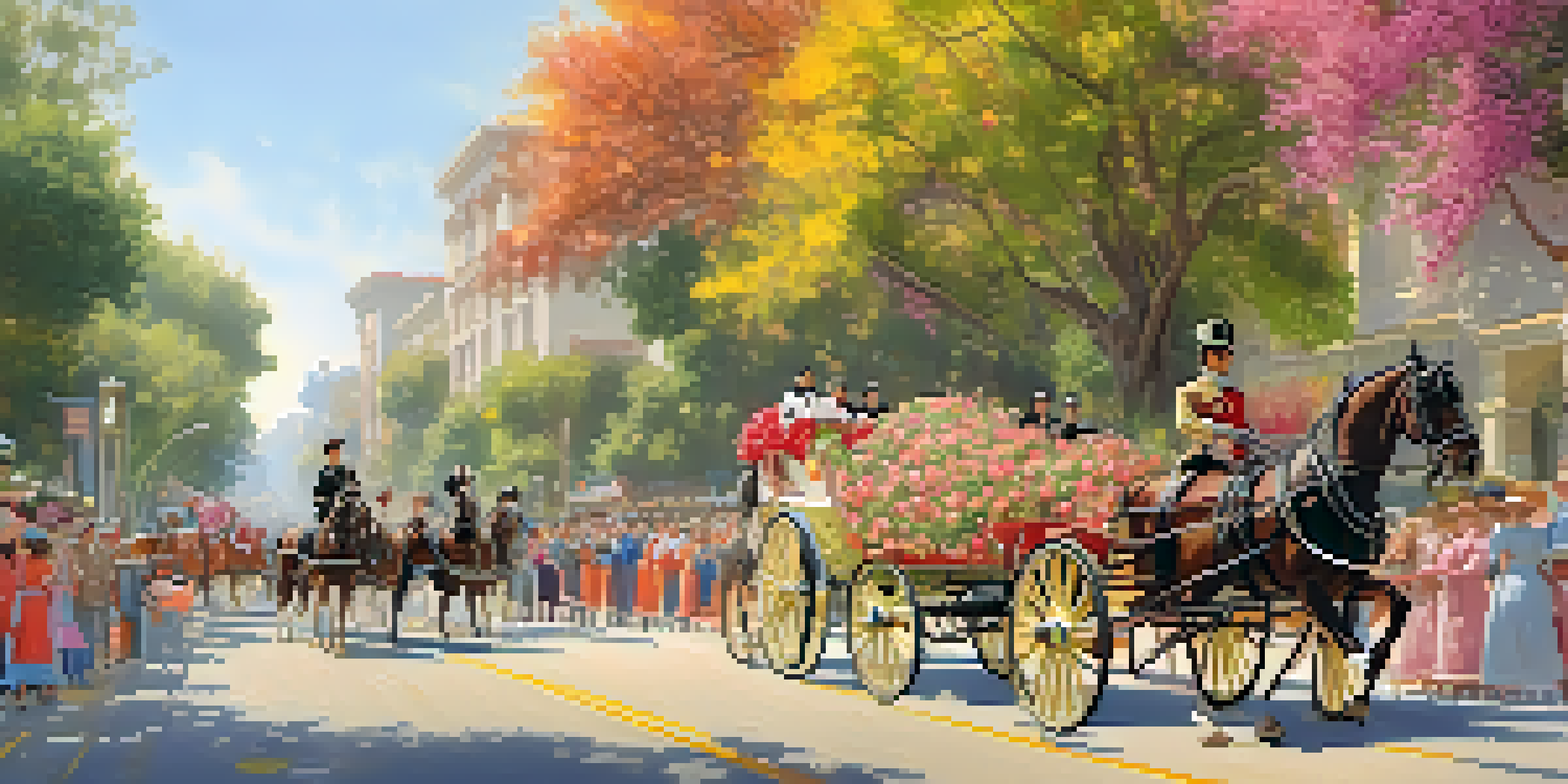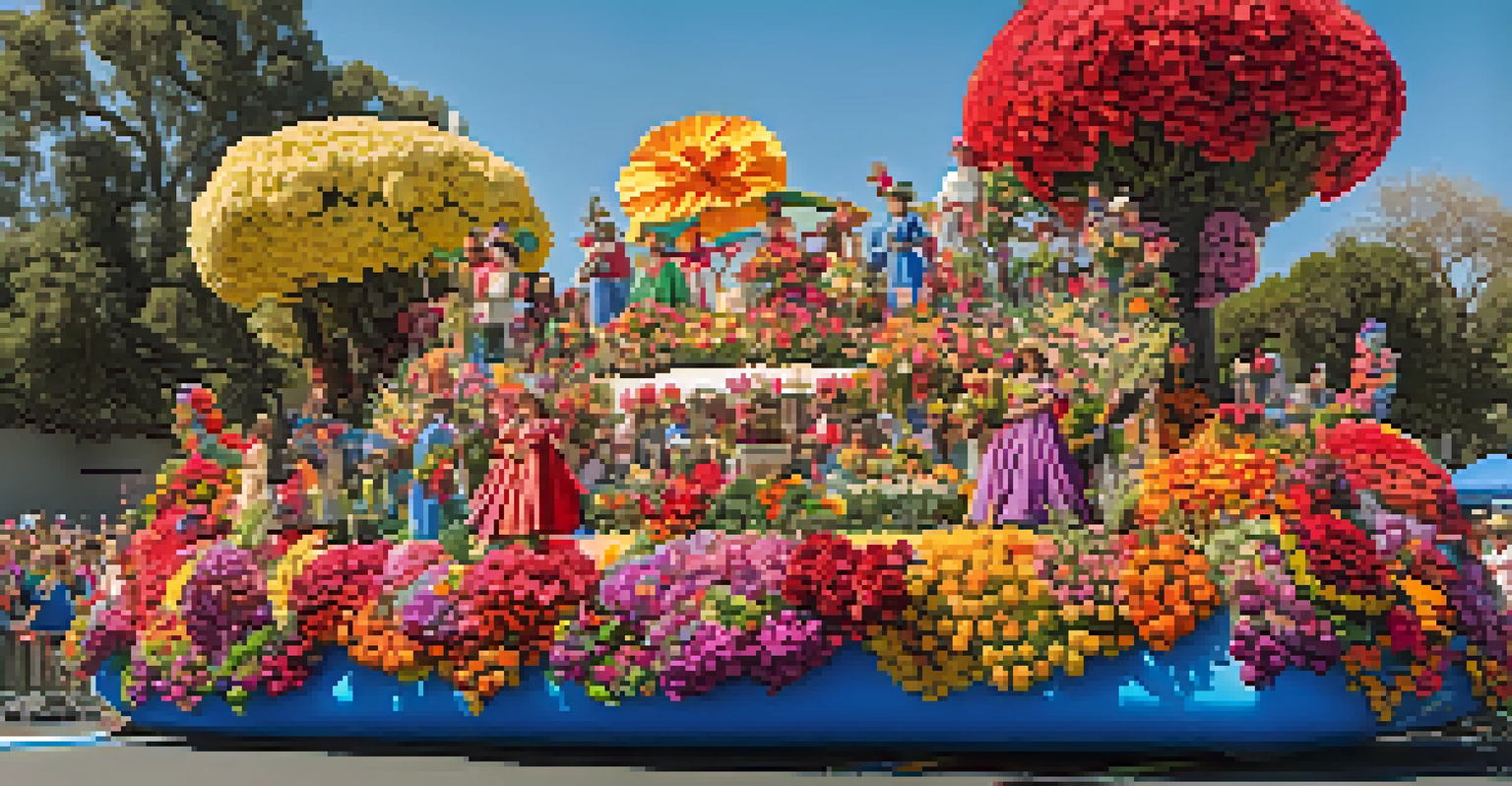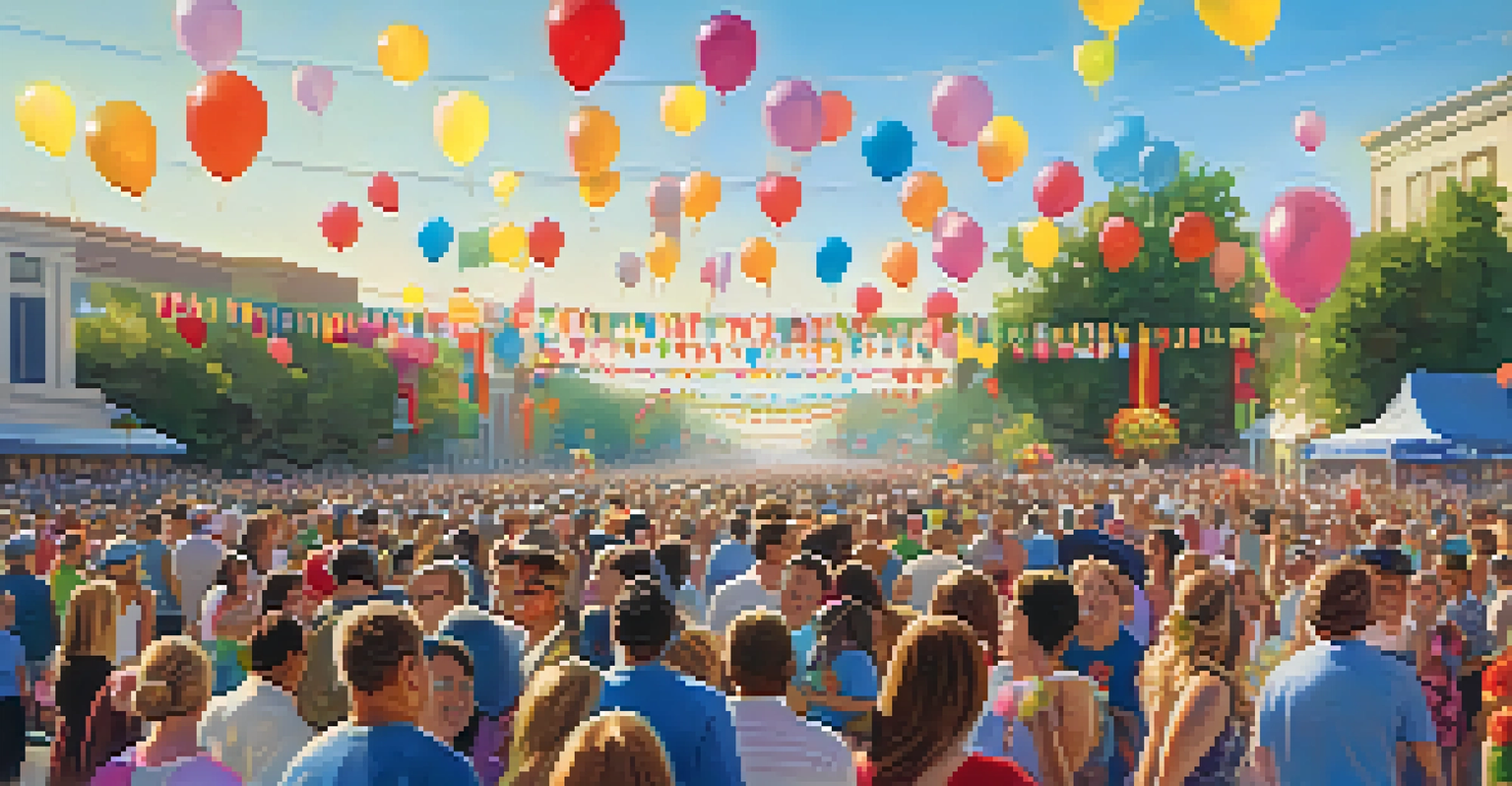Historical Moments That Shaped the Legacy of the Rose Parade

The Inaugural Rose Parade of 1890: A New Tradition Begins
The first Rose Parade took place on January 1, 1890, organized by the Valley Hunt Club in Pasadena, California. This event was not just a parade; it was a celebration of the beautiful flowers blooming in the region, showcasing the area's agricultural bounty. The inaugural parade featured horse-drawn carriages decorated with fresh flowers, setting a precedent for the floral extravaganza that would follow each New Year.
Tradition is not the worship of ashes, but the preservation of fire.
With just a small crowd of local spectators, the event was modest compared to the grand celebrations we see today. However, it ignited a spark that would lead to an enduring tradition. The idea was simple yet powerful: to welcome the New Year with joy and beauty, capturing the spirit of community and creativity.
As word spread about this floral celebration, attendance grew rapidly in subsequent years, drawing visitors from far and wide. This laid the groundwork for the Rose Parade to evolve into one of the most iconic events in the United States, symbolizing hope and renewal as we step into each new year.
The First Rose Bowl Game: A Perfect Pairing
In 1902, the first Rose Bowl Game was played, marking a significant shift in how the Rose Parade was perceived. What began as a floral display quickly became intertwined with college football, creating an annual spectacle that attracted sports fans and parade-goers alike. This fusion of sports and celebration transformed Pasadena into a hub for entertainment on New Year's Day.

The game was initially intended to be a one-time event, but its popularity ensured its return in the following years. The Rose Bowl established a tradition of college football that would become an integral part of the parade experience. This partnership not only enhanced the parade's prominence but also contributed to the economic growth of Pasadena.
Rose Parade's Humble Beginnings
The first Rose Parade in 1890 celebrated local floral beauty and community spirit, laying the foundation for an enduring tradition.
Today, the Rose Bowl Game stands as one of the most prestigious college football events, drawing thousands to the area. The synergy between the game and the parade continues to captivate audiences, highlighting the enduring legacy of both events as they celebrate the spirit of competition and community.
World War II: The Parade's Temporary Hiatus
The Rose Parade faced significant challenges during World War II, leading to its cancellation from 1942 to 1944. This hiatus was a testament to the times, as resources were diverted to support the war effort and many young men and women were drafted. The absence of the parade was felt deeply in the community, symbolizing a loss of tradition during a turbulent period.
The beauty of the rose is a reminder that even the thorns have their purpose.
In response to the war, the parade organizers adapted by utilizing materials that were less scarce, embracing a spirit of resilience. When the Rose Parade returned in 1945, it was a powerful reminder of hope and normalcy amidst the chaos of the war. The theme that year was 'Peace and Good Will,' reflecting a collective desire for healing and unity.
The return of the parade after the war marked a resurgence of community spirit and creativity. This moment not only reinforced the importance of the Rose Parade in American culture but also highlighted the ability of traditions to endure even in the face of adversity.
The Introduction of Floats: A Floral Revolution
In the early 1900s, the Rose Parade began to incorporate elaborate floats, changing the visual landscape of the event forever. The introduction of floats allowed for more creativity and storytelling, as organizations and community groups began to design intricate displays made entirely of flowers. This innovation drew even larger crowds, fascinated by the artistry and craftsmanship that went into each float.
The first float was created in 1907 by the Tournament of Roses Association, featuring a stunning design that captivated onlookers. Over the years, floats began to evolve, incorporating technology and themes that reflected current events and societal issues. The creativity behind the floats became a hallmark of the parade, showcasing the talents of designers and builders from all over the country.
Integration of Sports and Celebration
The introduction of the Rose Bowl Game in 1902 transformed the Rose Parade into a dual spectacle of sports and festivity.
Today, float-building has become a competitive and celebrated art form, with teams dedicating months to construct their designs. This transformation not only elevated the aesthetic appeal of the parade but also established a platform for community engagement and collaboration, making the Rose Parade a symbol of innovation and creativity.
Television Broadcasts: Expanding the Audience
The introduction of television broadcasts in the 1950s brought the Rose Parade into living rooms across America, significantly expanding its audience. The first televised parade in 1954 attracted millions of viewers, allowing people who couldn't attend in person to experience the beauty and excitement of the event. This marked a turning point in how the parade was perceived and enjoyed.
Television coverage transformed the Rose Parade into a national phenomenon, showcasing the elaborate floats and vibrant performances to an audience eager for entertainment. The ability to broadcast live allowed for greater storytelling, with commentators sharing the history and significance behind the floats and participants. This connection to a wider audience solidified the parade's place in American culture.
Today, millions continue to tune in from around the world, making it a cherished New Year's Day tradition. The visual spectacle of the Rose Parade has become synonymous with the start of the year, highlighting the importance of community, creativity, and celebration that resonates beyond Pasadena.
Themes and Messages: A Celebration of Values
Each year, the Rose Parade adopts a specific theme that reflects broader societal values and aspirations. Themes like 'Dreams Come True' or 'The Magic of Hope' serve as guiding principles for the floats and performances, allowing participants to convey meaningful messages. This thematic approach not only enhances the parade's narrative but also encourages community involvement in conveying shared ideals.
The themes often resonate with contemporary issues, allowing the parade to remain relevant and reflective of the times. For instance, during challenging social moments, themes have aimed to inspire unity and resilience, reminding viewers of the strength found in community. This dynamic relationship between the parade and societal values showcases its role as a platform for reflection and inspiration.
Cultural Icon and Community Values
Over the years, the Rose Parade has become a cherished cultural icon, reflecting societal values through its themes and fostering community engagement.
Through the years, the ability of the Rose Parade to adapt its themes has kept it fresh and engaging for new generations. This commitment to celebrating values fosters a sense of belonging and encourages everyone to participate in the spirit of hope and renewal that the parade embodies.
The Legacy of the Rose Parade: A Cultural Icon
Over the past century, the Rose Parade has evolved into a beloved cultural icon, representing not just Pasadena but the spirit of celebration itself. Its rich history, marked by significant moments and innovations, has created a legacy that continues to thrive. The parade's ability to unite people from all walks of life is a testament to its enduring appeal.
As we look to the future, the Rose Parade remains a symbol of hope, creativity, and community. Each float, each performance, and each theme weaves together stories that reflect our shared human experience. The legacy of the parade inspires future generations to embrace the values of joy and togetherness as they carry on this cherished tradition.

Ultimately, the Rose Parade is more than just an event; it is a celebration of life itself. Its historical moments have shaped its legacy, ensuring that it will continue to inspire and bring people together for many New Year's Days to come.